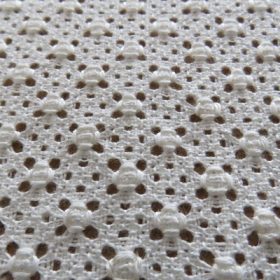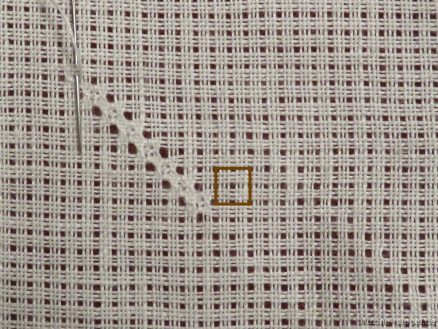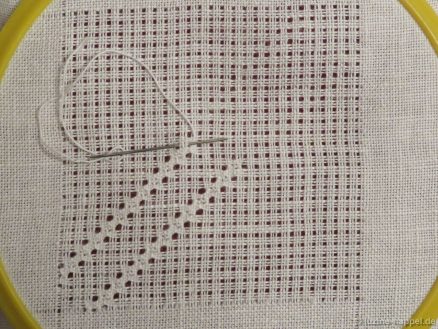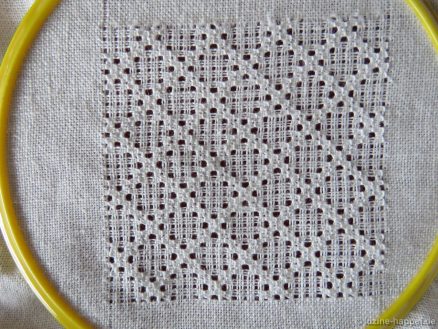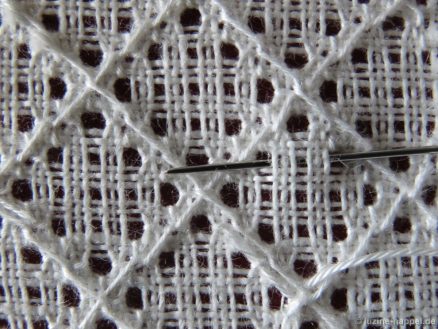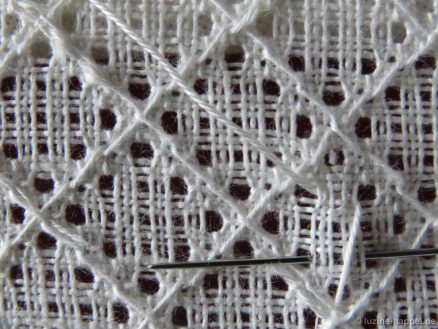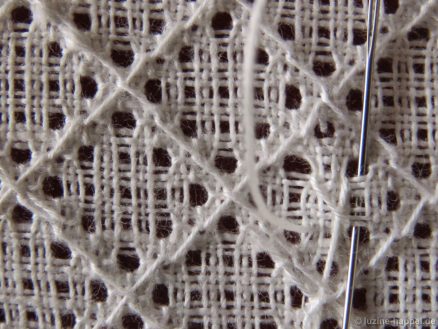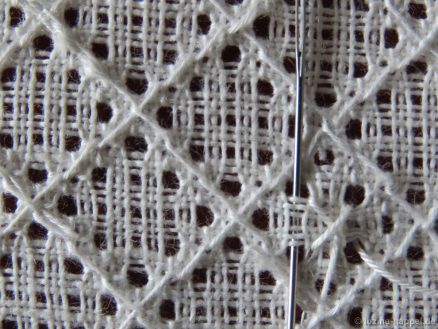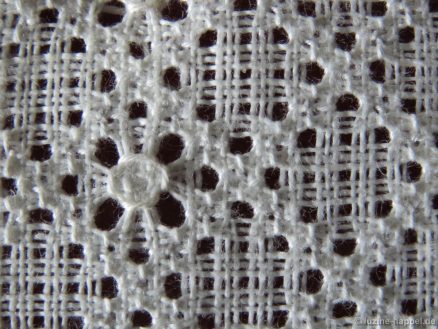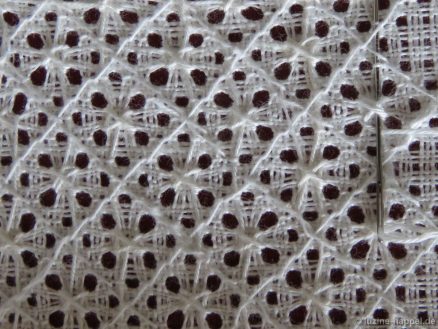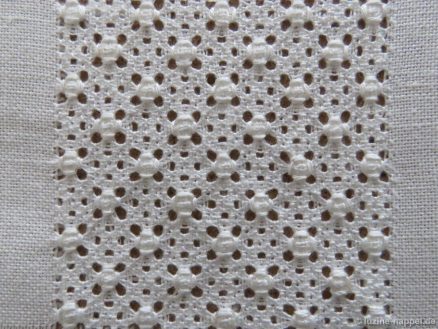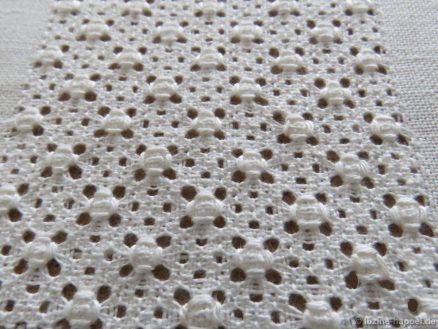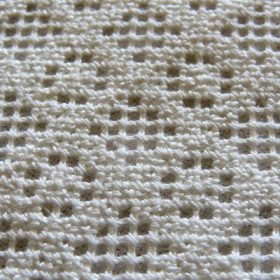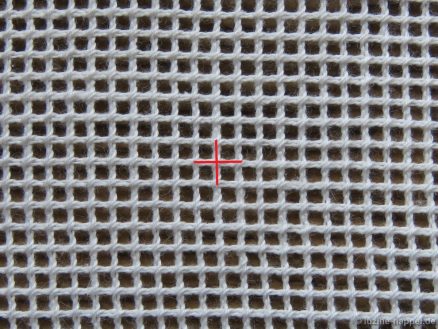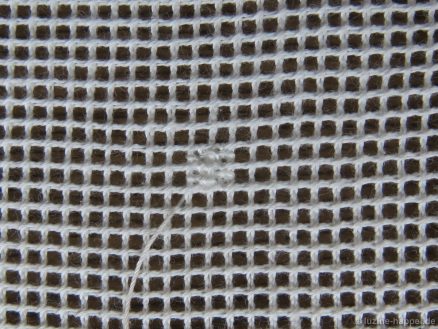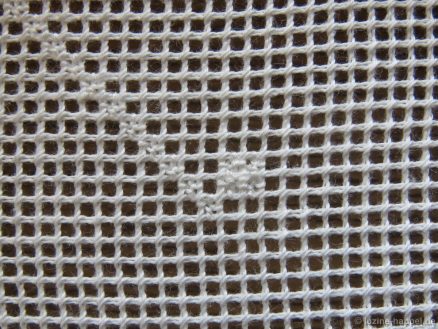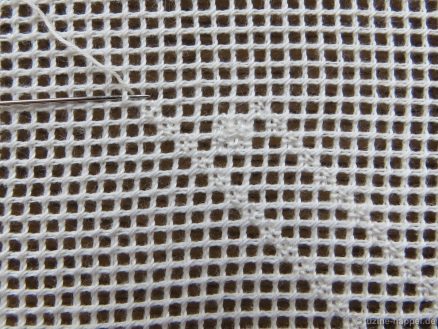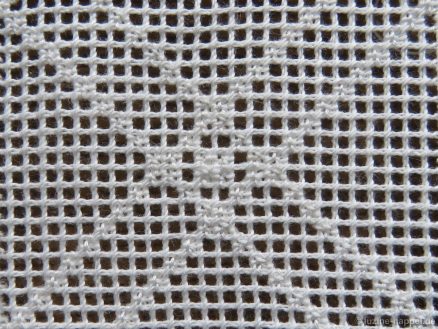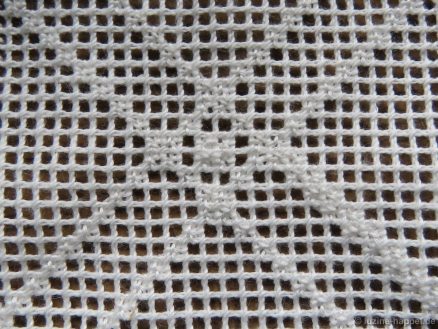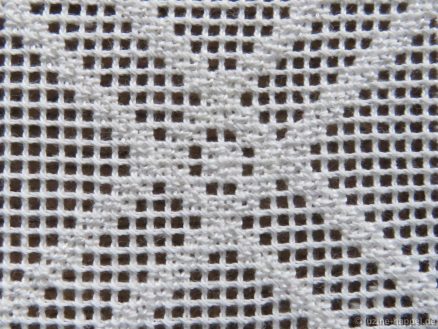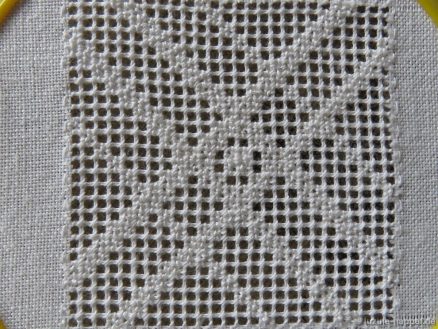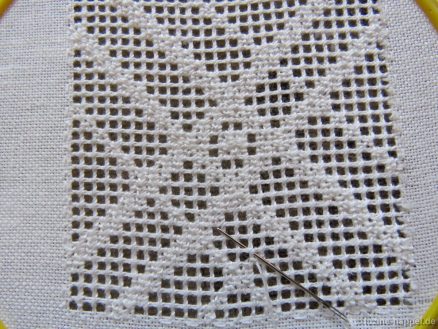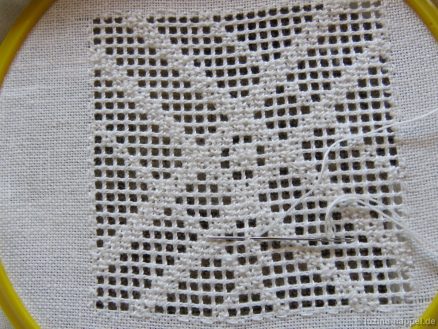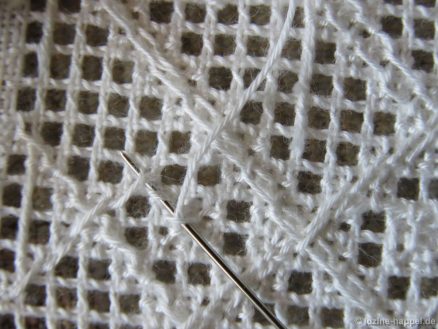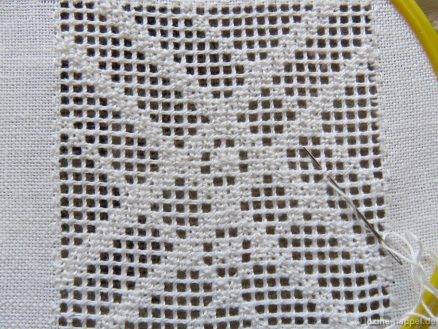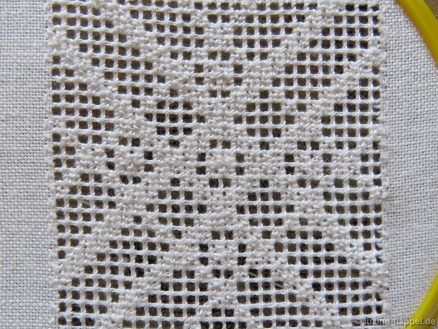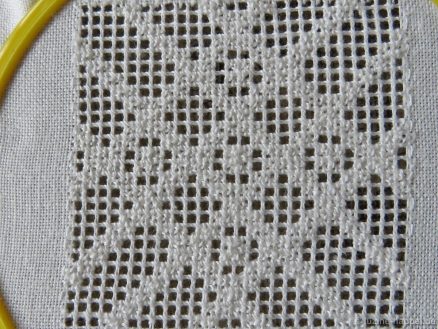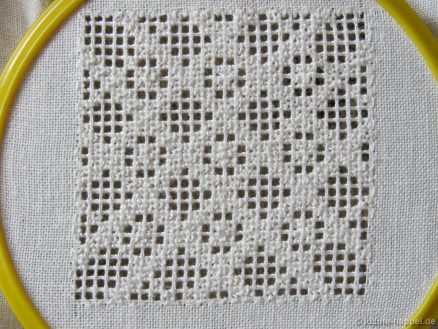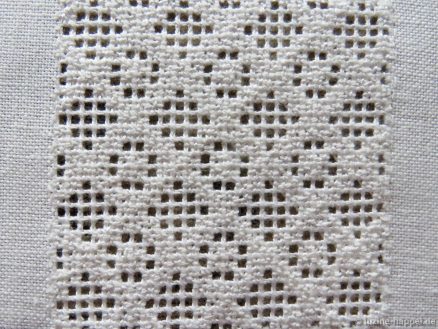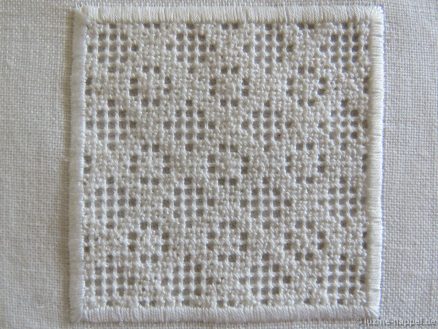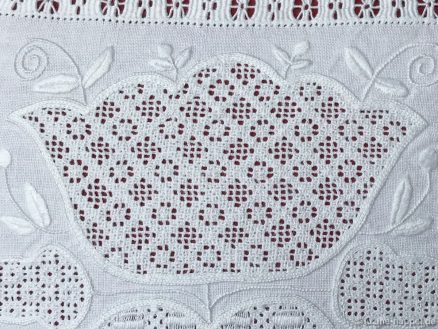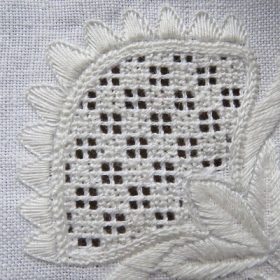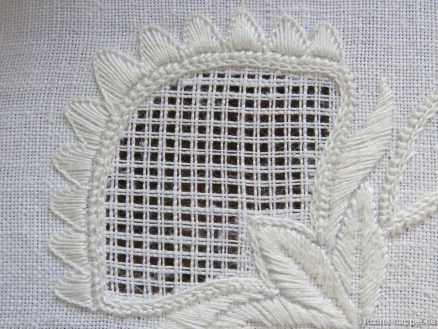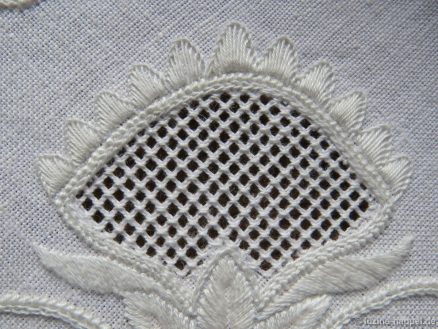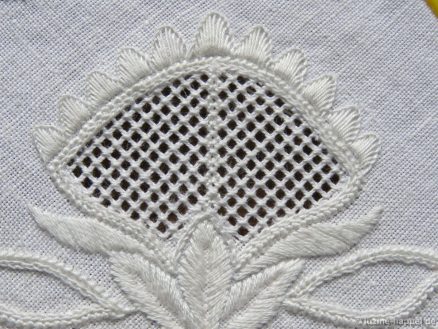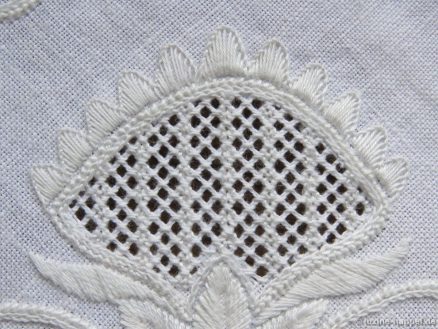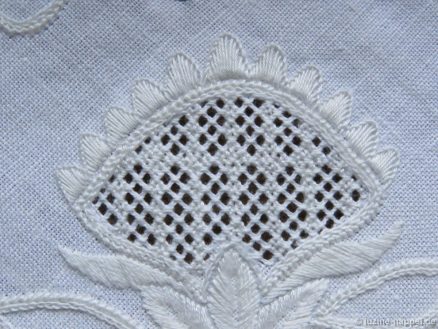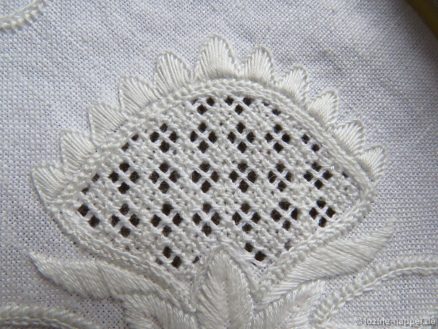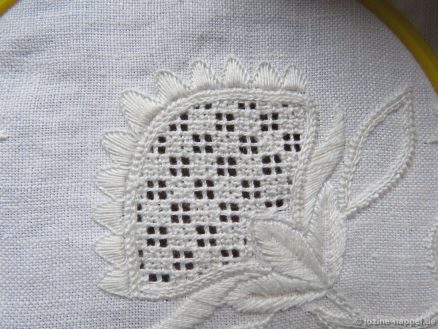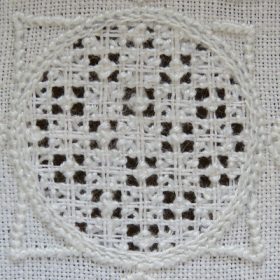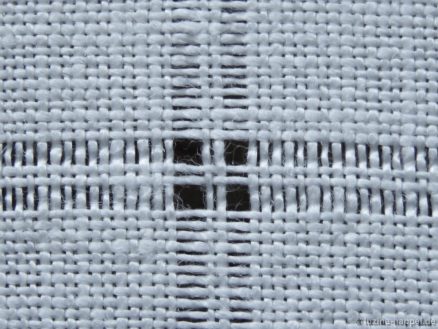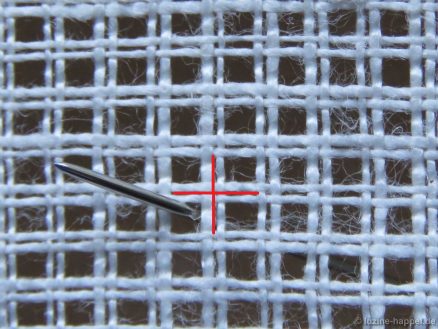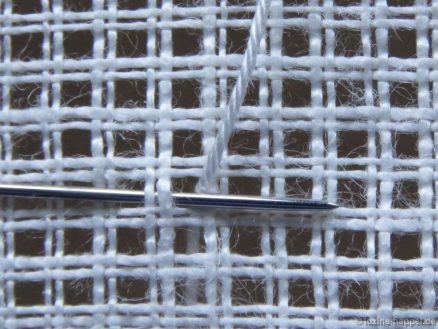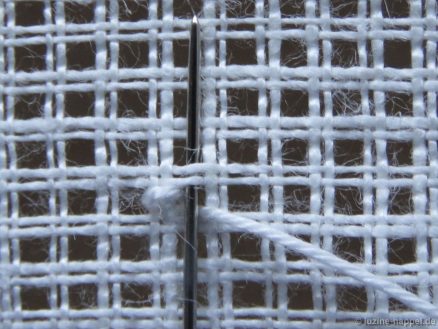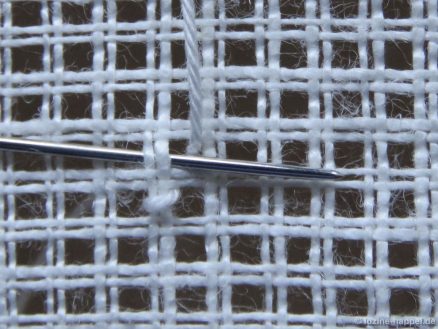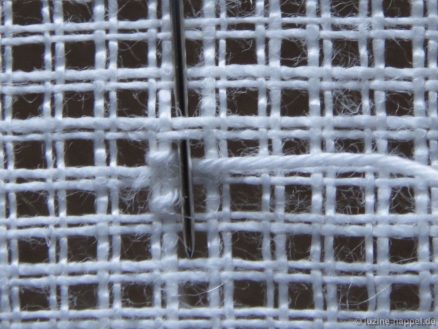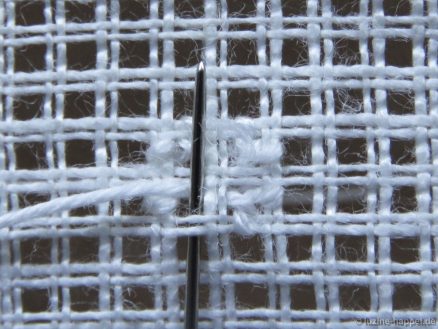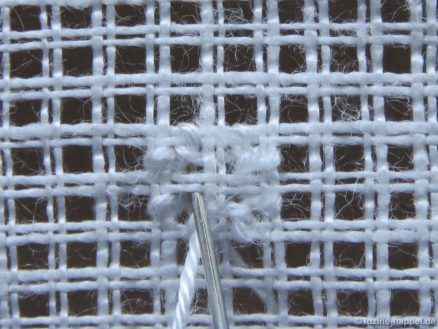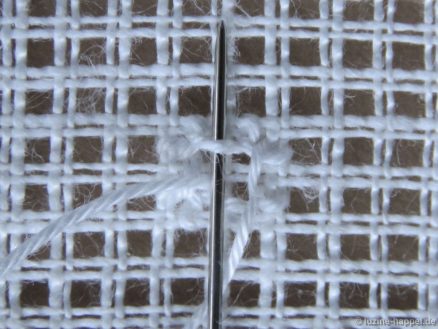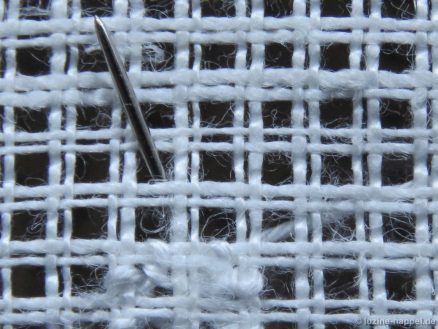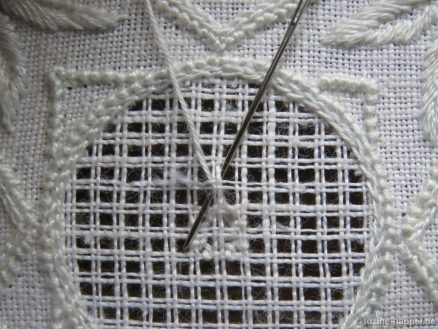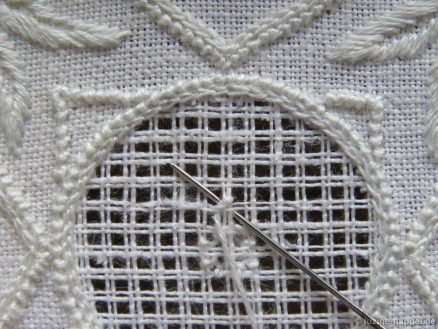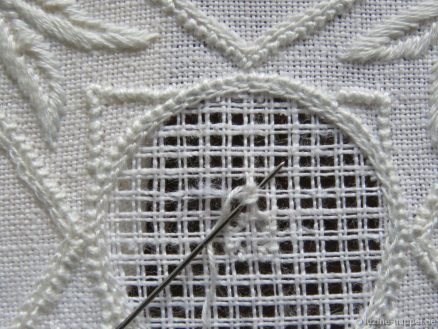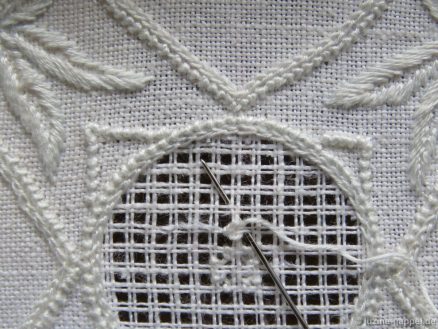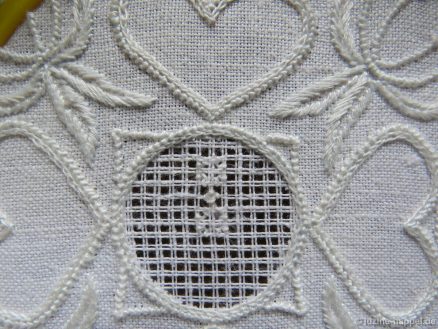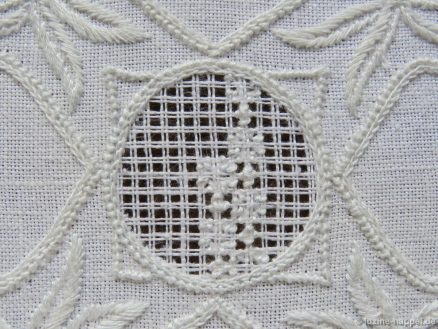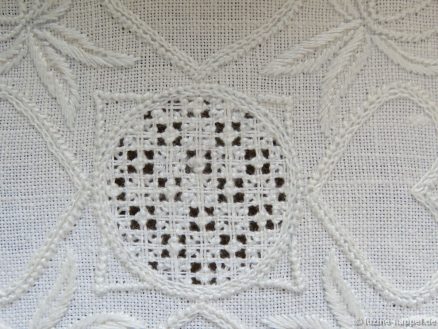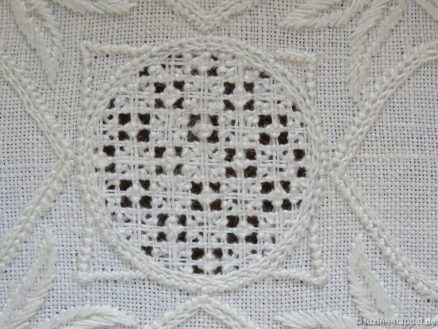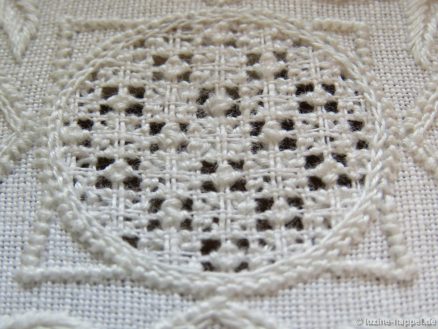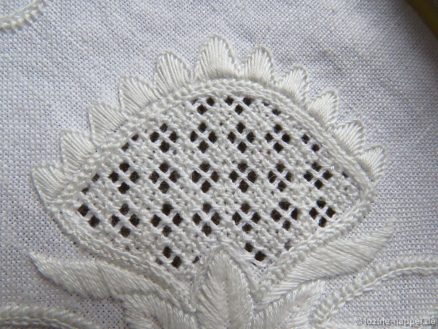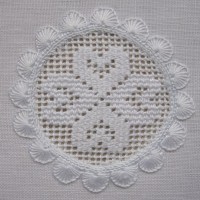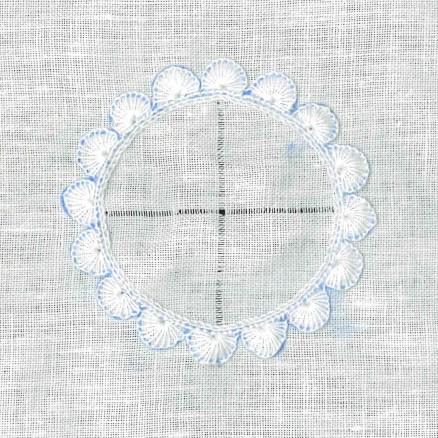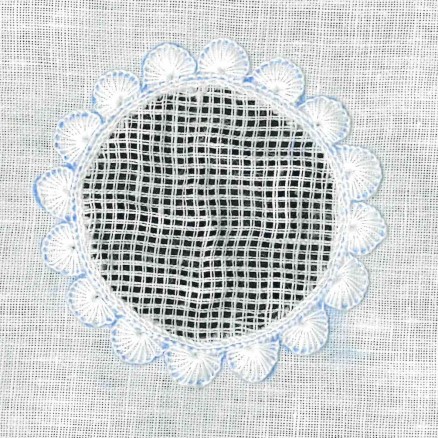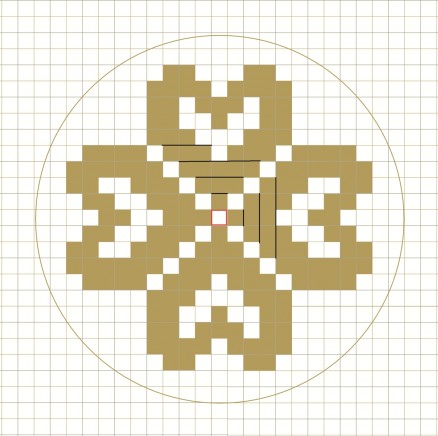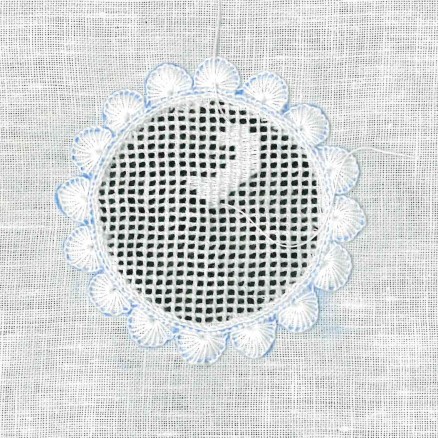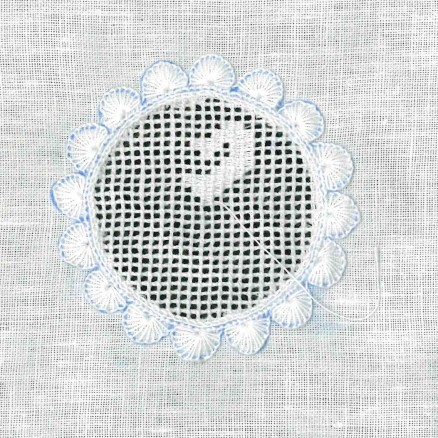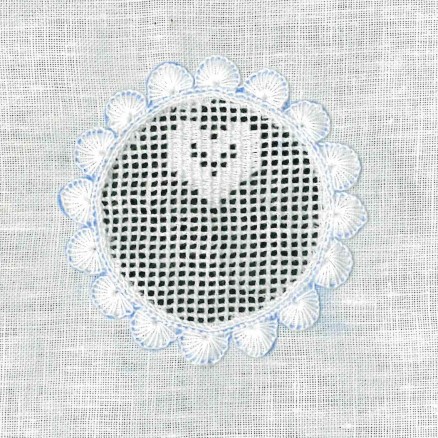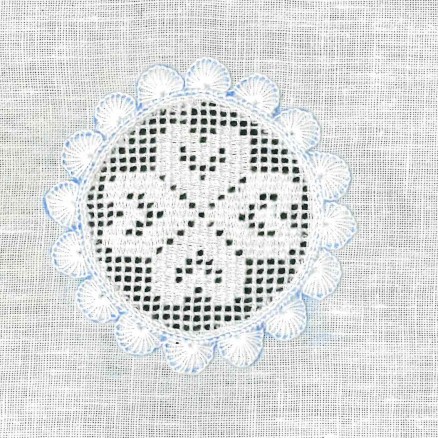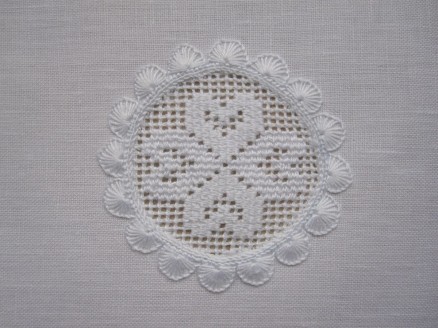Filling Pattern – No. 553
category: Limet-Filling pattern
linen used: 13.5/cm thread count
threads used: coton à broder No. 20 for the Rose and No. 16 for the Four-Sided stitches
stitches used: Rose and Four-Sided stitches
center: intersection of withdrawn thread lines (in other shapes or motifs: longitudinal axis = withdrawn thread line)
one pattern segment = 24 threads
The filling pattern shown here is a practice exercise only. You can see it used in a shape at the end of this article.
First, establish a Limet grid with an intersection of withdrawn thread lines as center by alternately cutting 1, leaving 3, vertically and horizontally.
Mark around the center point a square of 2 X 2 squares. Bring the needle up in the next hole left of the bottom left corner. This is the center of the first Rose stitch.
Work Rose stitches in a diagonal row.
Work a second row of Rose stitches parallel to the first and at a distance of 2 empty holes (counted in a diagonal line from one Rose stitch center of the first row to a Rose stitch center of the second row).
Do the same in the crossing direction.
Up from there lay a grid of Rose stitch rows across the entire shape in the established way. Each area of the grid has a remaining section of 2 X 2 squares around the respective center hole, which now should be covered with Four-Sided stitches.
Because the working thread has to be slid under previously worked stitches to travel from one stitch to the next, it is easier to work the stitches from the back.
Secure the working thread very well and bring it up at an intersection of two Rose stitch rows.
It is important to choose the opposite side for starting the Four-Sided stitch to get the corner holes clean and open and the stitch centered.
*Start on the top of the center square, inserting the needle in the top right hole and bringing it up in the top left hole.
Travel to the bottom, insert the needle in the bottom right hole and bring it up in the bottom left hole. With this stitch the thread can be tightened a little bit more to pull together the threads of the center square.
Insert the needle in the top right hole again, but bring it up in the bottom right hole.
Insert the needle in the top left hole and bring it up in the bottom left hole.* In this way and always tightening the working thread, a prominent center is established on the front.
But this stitch will turn out much more prominent, working the Four-Sided stitch twice. This also enables one to better tighten the working thread and so to establish a more even structure of the complete pattern. So repeat the four steps (*) once.
Then, traveling straight up to the next center square, slide the working thread through the cross that has been made with the Four-Sided stitches and then through the stitches of the right three-thread column.
Work one Four-Sided stitch two times in the established way in each section center of the Rose stitch grid.
I discovered this stitch in the contribution of Ekaterina Khokhlova to the Global Schwalm Sampler.
